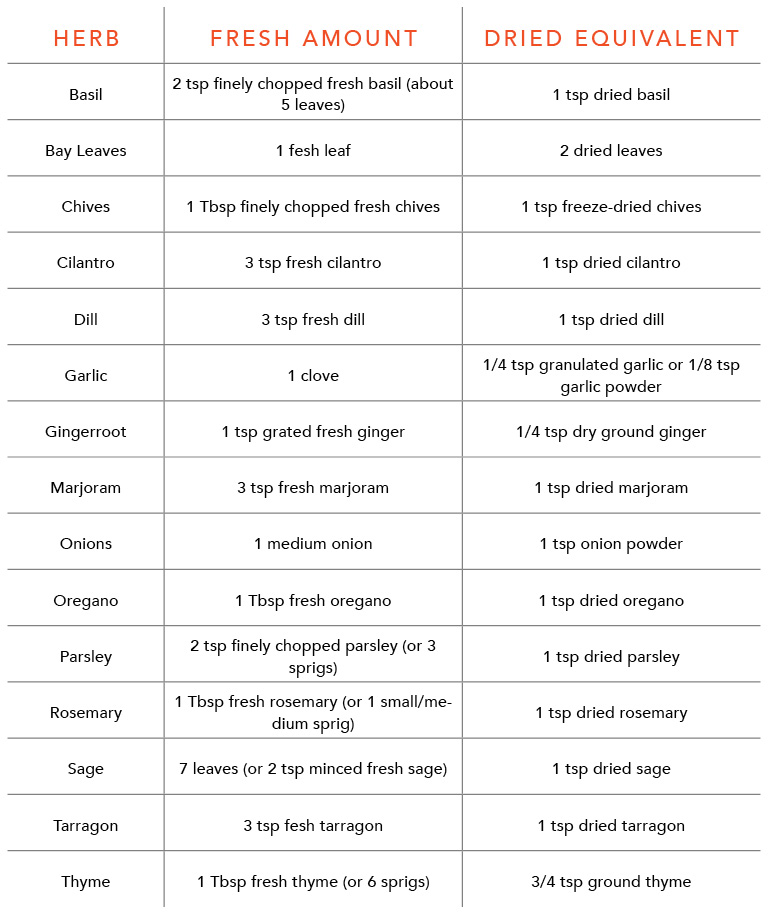FRESH HERBS VS. DRIED HERBS
Fresh herbs rather than dried herbs are my choice to work with within recipes; however, the rub comes in that they are very expensive and challenging to keep fresh until the next recipe requires using them. Usually by that time, the herbs have lived out their lives and throwing away these beautiful sprigs of flavor just isn’t an option, in my opinion. Hence, the dried herb shelf stable option can be a great solution.
For those who have their own potted herb gardens, I am officially envious and plan to take on this task down the road at some point – the idea of taking a snip of an herb off their fresh garden stems and adding to a dish brings joy. Meanwhile, dried herbs can be an ideal alternative in many recipes.
Fresh-to-Dried Conversion Chart
As a general rule, the conversion is 3 parts fresh herbs to 1 part dried herbs; such as 1 T. fresh herbs = 1 tsp. dried herbs. Here is a more detailed conversion chart:
Fresh Herb Storage Tips
Refrigerating fresh herbs
For fresh herbs such as parsley, Italian parsley or cilantro (with stems):
Snip stem ends of about ¼” or less.
Fill a glass jar or vase with about 1” of water; place stems down in jar (like flowers). Be sure leaves are not immersed in water.
Cover the herbs with a plastic bag and refrigerate. (I use the same bag from the grocery store that I purchased the herbs in.)
Other miscellaneous herbs (with leaves):
Basil – Basil is not fond of cold temps. Simply follow the directions above and keep it out on the countertop.
Thyme, rosemary and oregano – Wash and thoroughly dry herbs. Wrap in a paper towel and place in a bag, store in the crisper drawer of the refrigerator.
Freezing fresh herbs
Option 01
Wash herbs and thoroughly pat dry with a paper towel.
Trim the leaves off of herbs where only the leaves are used such as oregano or rosemary. For those that use the stems like dill, cilantro or mint, leave whole.
Place herbs in an airtight plastic bag or gently vacuum seal and mark the date on the bag along with the type of herb.
When ready to use, simply open the bag and use what you need and reseal, airtight. Herbs should last up to 6 months in the freezer.
Option 02
Wash herbs completely. Cut into pieces that will fit inside a single ice cube pocket in an ice cube tray (about 1 T. each pocket; this way you will know how much you have in each).
After placing cut herbs in each ice pocket in the tray, fill with fresh cold water.
Freeze cubes until solid.
Remove herb ice cubes from tray and place in an airtight plastic bag; mark the bag with a Sharpie, both date and type of herb.
When ready to use, pull out as many cubes as you need and thaw. Pat herbs dry before use.




